Photo essay for the Special Initiative “From Fear to Resilience: Visual Storytelling of COVID-19 in Southeast Asia” by SEA Junction and Partners.
| Title: | Engaging Javanese Tradition for Protection in Jogjakarta, Indonesia |
| Storyteller/Artist: | Yanuari Christyawan |
| Photographer | Yanuari Christyawan |
| Place: | Jogjakarta, Indonesia |
| Time: | April 2020 |
I live in Daerah Istimewa Yogyakarta (Special Region of Yogyakarta) in Indonesia which is well-known for its unique Javanese art and culture. My passion is dance, and in particular I focus on traditional Javanese dance since it offers me a way to preserve my identity and culture. Usually, I have weekly performances or sometimes dance at festivals and other special occasions. But now, during this corona pandemic, all performances have been postponed and even dance practice has been stopped. Every day, during my stay at home I like to record a short performance and share it on Instagram or Facebook. I even joined an online competition that encouraged artists to submit dances that addressed the COVID-19 pandemic and became the winner.
I dance at home because I want to be productive even when in isolation, but most importantly because with dance I can reflect on what is happening. My dances performed at home relate to this crisis. With masks, I can express many feelings and characters as they allow the artist –together with the audience when present– to learn about good or bad from the mask characters and the movements. For instance, when I am doing the Yogyakarta masked dance of prince Panji who misses his beloved princess Sekartaji, I express a person’s longing to return to the normal conditions before the pandemic. When I perform the masked dance of Panji in the style from Cirebon, West Java, it is a prayer for God to bless the earth along with the health and well-being of humanity affected by COVID-19. When I dance wearing the mask of Kelana Sewandana, who is the adversary of Panji, I express anger and stress the need to stop the evil virus. When I am not dancing, I take care of my masks and other dance attributes.
I also derive strength from Javanese culture in other ways. Even if we are confined in our homes, I believe we can still do a lot of things to support ourselves, the environment, and people out there. Some of us may want to volunteer or give donations. I like to use my prayers and inner strength to transfer positive energy to my surroundings. As I learned through dancing, spirituality is a core aspect of our Javanese culture as transmitted from our ancestors. In his book Javanese Shadow Play, Javanese Selves (1987: 109), Ward Keeler wrote that “all the beliefs that concern potency and the imperceptible world, present Javanese with alternative sources of assistance when special needs or aims arise.” Among these are mantras (ritual incantations) and poems that can protect us from visible and invisible threats.
To gain strength during this pandemic, there are two chants that I like to recite, namely Mantra Kalacakra and Kala Singgah. Mantra Kala Cakra was supposedly written during the 14th century in the form of a sacred geometric design consisting of a cakra (wheel) with eight spokes, symbolizing the eight cardinal directions of the universe and thus the provision of protection all around. Meaning the “Wheel of Time” it also refers to the demon of death Kala and cakra (discus) as the weapon of the god of life and preservation Vishnu, thus implying “protection from evil”. It is usually recited by the dhalang (puppeteer) during a ruwatan (puppet play to protect someone).
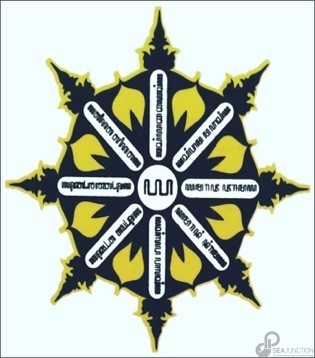
Figure 1: Kala Cakra’s geometric design
There is an initial incantation (here translated in English by Garret Kam):
| Hong ilaheng, | (Hail Almighty God) |
| Sang Hyang Kalamercu Katup, | (Divine Kalamercu go away,) |
| Sun umadep, | (I humbly sit before you,) |
| Sun Umarep, | (I humbly sit before you,) |
| Nir Hyang Kalamercu Katup, | (Be gone divine Kalamercu go away,) |
| Nir Hyang Kalamercu Katup, | (Be gone divine Kalamercu go away,) |
| Nir Hyang Kalamercu Katup. | (Be gone divine Kalamercu go away.) |
Then this mantra is repeated several times:
| YAMARAJA—JARAMAYA | (The one who fights has mercy) |
| YAMARANI—NIRAMAYA | (The one with bad intentions goes away) |
| YASILAPA—PALASIYA | (The one who causes hunger provides nourishment) |
| YAMIRODA—DAROMIYA | (The one who is distressed gives freedom) |
| YAMIDOSA—SADOMIYA | (The one who sins does good merit) |
| YADAYUDA—DAYUDAYA | (The one who makes war makes peace) |
| YASIYACA—CAYASIYA | (The one who causes plague brings prosperity) |
| YASIHAMA—MAHASIYA | (The one who ruins restores with love) |
To close the chant, the following is said:
| Rahayu, Rahayu, Rahayu | (Peace, Peace, Peace) |
The mantra instills hope that everyone can change and become a good person, spread love and protect others so that we can all live peacefully. In these COVID-19 times it encourages us to stick together, give kindness to each other and work together to end the pandemic.
A poem that I like to recite is Kala Singgah. Kala means “demon” and singgah means “to go away”, so it is meant to chase away evil spirits and show that human beings are greater than them. The poem provides protection and give us more power and self-confidence. It was composed by Sunan Kalijaga, who was one of the walisanga or Nine Saints of Islam. Usually this poem is chanted in the macapat (poetry) or sekar alit (small verse) Pangkur Gedhong Kuning (Pangku Yellow Building) melody. The number of syllables and final vowel in the lines are 8a, 11i, 8u, 7a, 12u, 8a, 8i and Garrett Kam has maintained the poetic structure in his English translation to give a feeling for the Javanese poetry.
| Singgah-singgah kala singgah | Pray for the demons to depart, |
| Tan suminggah Durga Kala sumingkir | In essence pray that the gods of disease leave, |
| Sing asirah sing asuku | The ones in the head, leg and foot, |
| Sing atan kasat mata | The ones in tearless eyeballs, |
| Sing atenggak sing awulu sing abahu | The ones in the neck, body hair, and the arms, too, |
| Kabeh pada sumingkira | All of them together depart, |
| Hing telenging jalanidi | Deep down to the depths of the sea. |
| Aja nggodha lan ngrencana | Do not be tempted and make plans, |
| Apaningsun ya sun jatining urip | For I am indeed life in its purity, |
| Dumadiku saka henu | Along the way I was produced, |
| Heneng-henenging cipta | Created in complete calm, |
| Singgangsana hing tawang-tawang prajaku | Enthroned in my heavenly divine place to rule, |
| Sinebut pura kencana | Known as the golden palace, |
| Bebetenging rajeg wesi | An iron fence for protecting. |
| Ana kanung saka wetan | An eastern supernatural, |
| Nunggang gajah telale elar singgih | Really rides an elephant with trunk and wings, |
| Kullahu marang bali kul | Avoid all deep emotions, too, |
| Jim setan brekasakan | Genies, devils have bad plans, |
| Amuliha mring tawang-tawang prajamu | Return home to your heavenly kingdom high up, |
| Eblise ywa kari karang | Evil spirits are stone remnants, |
| Kulhu ambolak-ambalik. | Shun feelings from all perspectives. |
With these two chants, I continue the tradition of my Javanese ancestors and their belief in the universality of prayers, irrespective of specific religious symbols or rites. Prayers are meant to safeguard our universe and humanity, and by reciting Mantra Kalacakra and Kala Singgah I pray that this COVID-19 goes away soon.
Photographer/Storyteller
Yanuari Christyawan (called Mas Yanu) was born and lives in Yogyakarta where he works as a museum guide at the Monggo Chocolate Museum. Previously, he was an elementary school teacher. He performs mostly traditional Javanese dance and writes poetry. Mas Yan is a member of the dance group Pusat Olah Seni Retno Aji Mataram (Retno Aji Mataram Art Center). He learned Thai dance at Suphanburi School of Dramatic Arts in 2017, Minahasa culture in Manado North Sulawesi in 2015, and Indian dance in 2014 and Chinese dance from the Fuqing dance group in Singapore in 2013. The themes in his choreographies are related to spirituality, legends, folklore, and personal experiences. In his works, Yanuari uses Javanese spirituality, legends, folklore and personal experiences. He hopes to inspire people to respect each other and wishes to spread goodness for the universe.
Organizers
From Fear to Resilience: Visual Storytelling of COVID-19 in Southeast Asia is a special initiative of SEA Junction and its partners Beyond Food, GAATW and Bangkok Tribune to provide an alternative visual narrative of the pandemic in the region. We believe in the importance of reducing fear and promote informed policy and public discussion to show that COVID19 is also a tale of survival, resilience and solidarity. We are asking for short stories in the form of photo essays, short documentaries and illustrated art essays in any language of Southeast Asia (to be later translated into English) or in English.
See further: http://seajunction.org/special-initiatives/
Engaging Javanese Tradition for Protection in Jogjakarta, Indonesia by Yanuari Christyawan
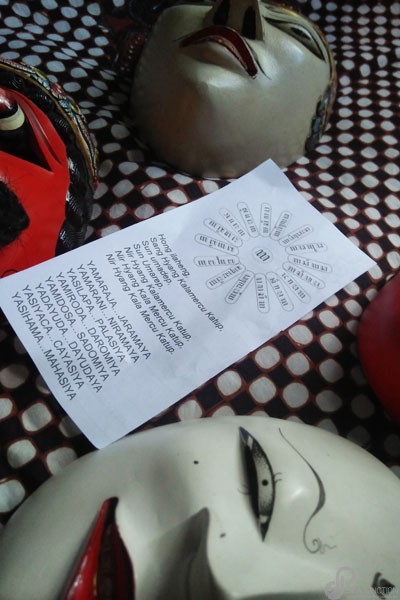
Mantra Kalacakra, the Javanese chant for self-protection
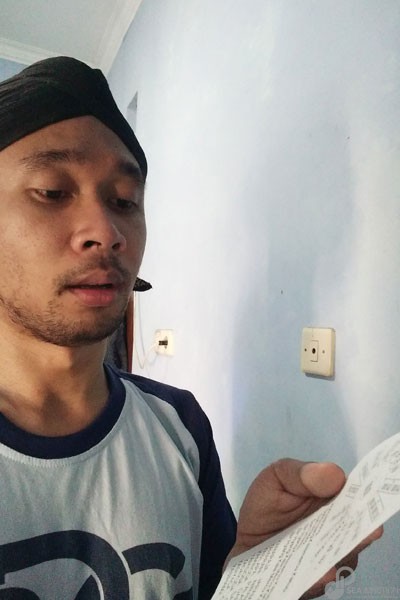
Every night or at the time I pray, I recite Mantra Kalacakra
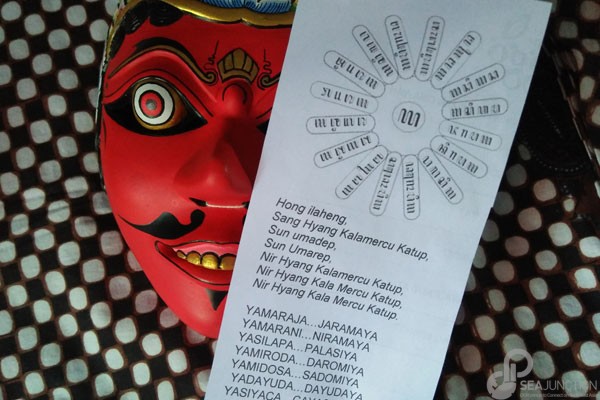
As a Javanese, I use Mantra Kalacakra to cope with this pandemic
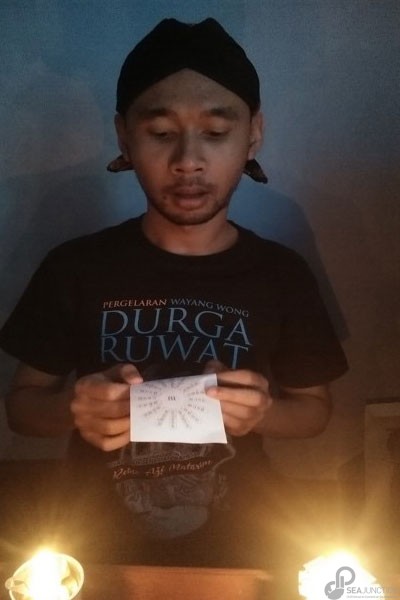
Chanting Mantra Kalachakra
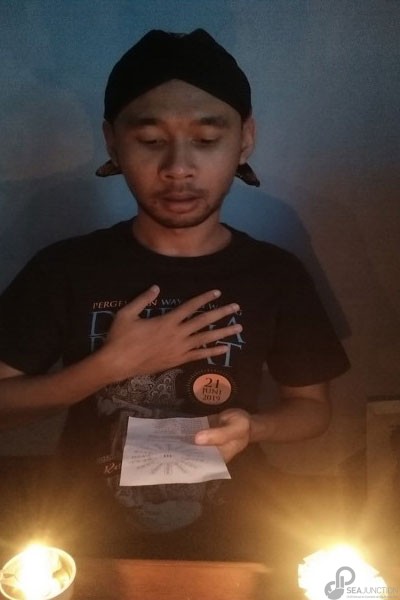
Chanting Mantra Kalachakra
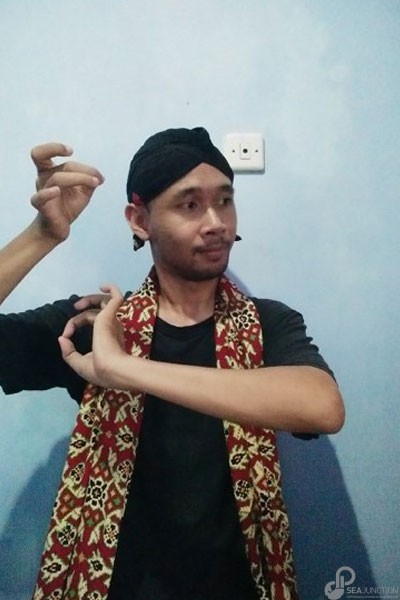
The Javanese dance movement atrap sumping (adjusting the ear ornament)
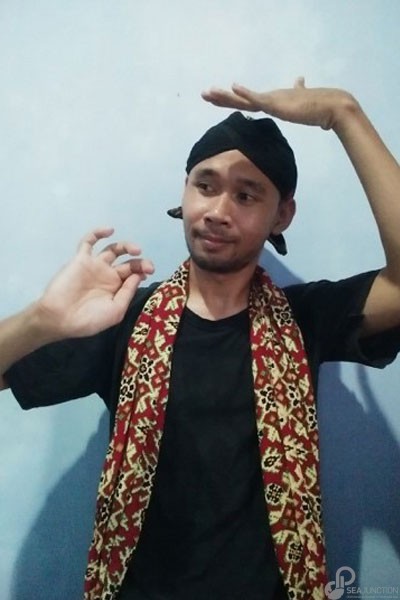
The Javanese dance movement atrap jaman (adjusting the crown)
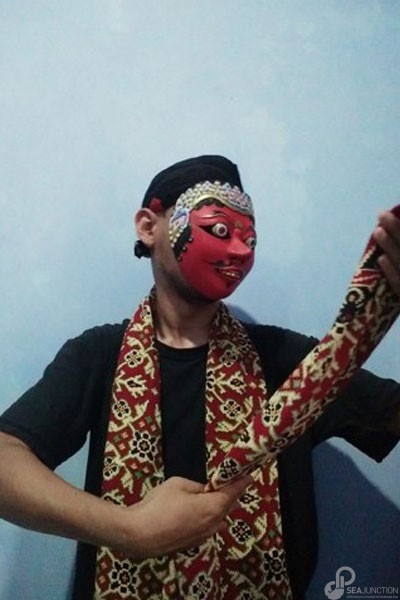
The Javanese masked dance of Klana Sewandana who desires princess Sekartaji, the wife of his adversart prince Panji. Here it expresses evil and symbolizes the need to stop the virus.
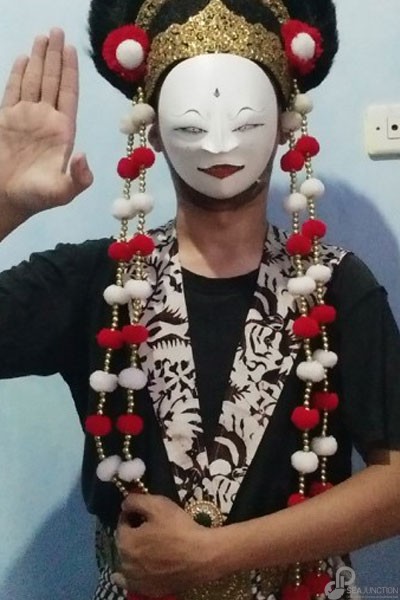
The masked dance Panji from Cirebon, West Java as a prayer for God to bless the earth . In this context, the dancer prays for the world’s health
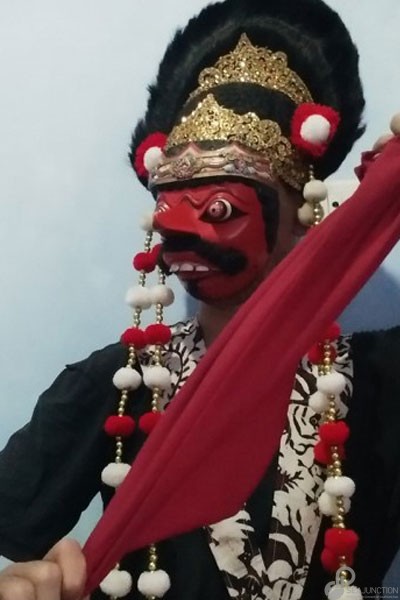
The masked dance of Kelana from Cirebon, West Java, is the enemy of Panji and is the symbol of anger and a need to stop the evil virus
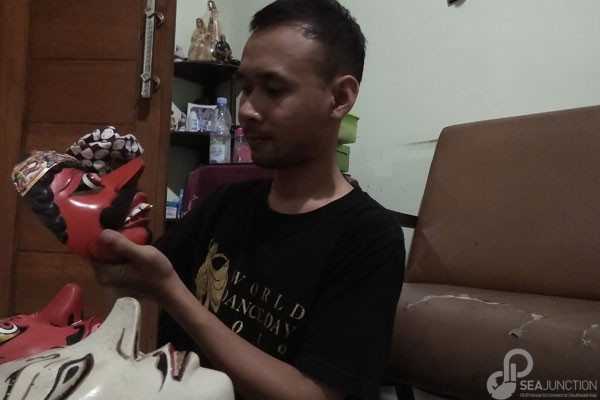
Taking care of the masks for the dance
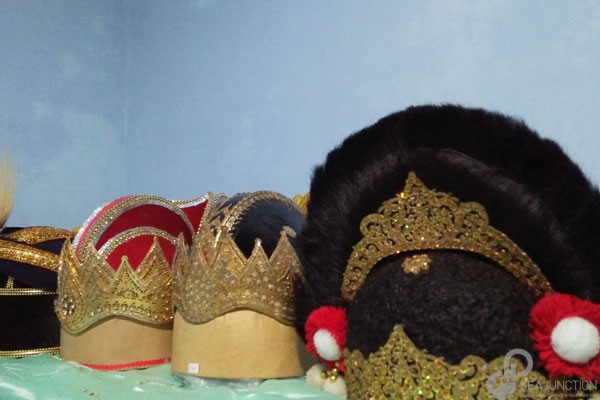
The artist’s collection of dance headdresses
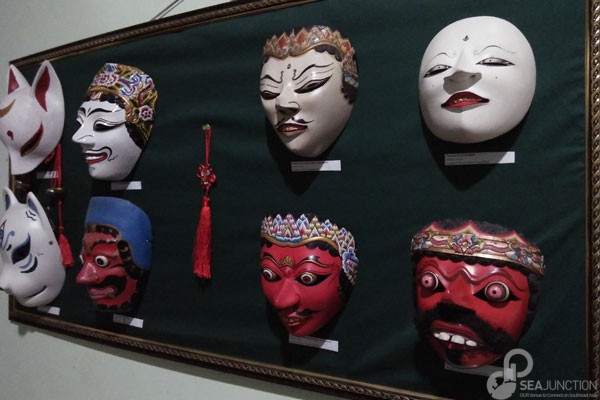
The artist’s collection of dance masks
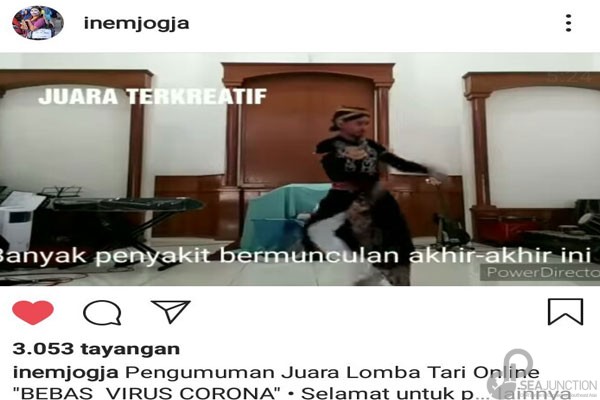
The artist won the first prize for creativity in an online competition of dances to be free from COVID-19.


